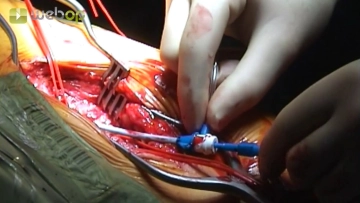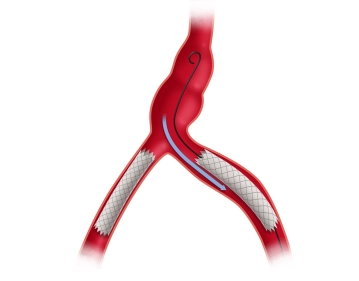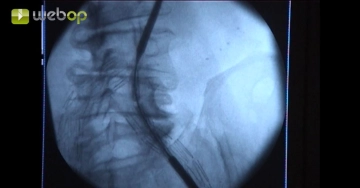Replace the stiff guidewire with a soft hydrophilic-coated guidewire (here:Terumo®)and advance it into the descending aorta. Now, introduce a pigtail catheter over the indwelling guide wire through which DSA is performed in road-mapping technique. DSA demonstrates successful repair of the right internal iliac artery aneurysm and the migrated left endoluminal vascular graft, the endoleak, and the perfused left internal iliac artery aneurysm. Since the infrarenal aorta is aneurysmatic and dilated to around 35 mm, one alternative could have been an endoluminal Y-graft.
Tips:
1. It may be difficult to advance the Terumo® wire up because of the severe kinking of the iliac arteries. If a straight or tip-curved Terumo® wire does not slide along the vessel wall, it is often necessary to employ a guiding catheter since the latter is better able to pass the tortuosities of the vessel (Road Runner®, H-Stick®, RDC® or similar). Sometimes the maneuver also succeeds with a pigtail catheter, which must be used for exploratory angiography anyway.
2. Roadmapping („Pathfinder“): This involves the administration a small bolus of contrast agent to visualize the abdominal aorta and iliac arteries as a roadmap. This image is saved as a mask. Subsequent images are then acquired without contrast media and subtracted from the mask. In this way, for example, only the current position of a radiopaque catheter will be displayed. In the resulting subtraction images, the bright catheter will be visible against the dark vessels, and any background irrelevant to this study is hidden.
3. The endoluminal Y graft would have been a salvage procedure in case of failure of the unilateral procedure in the video clip.




